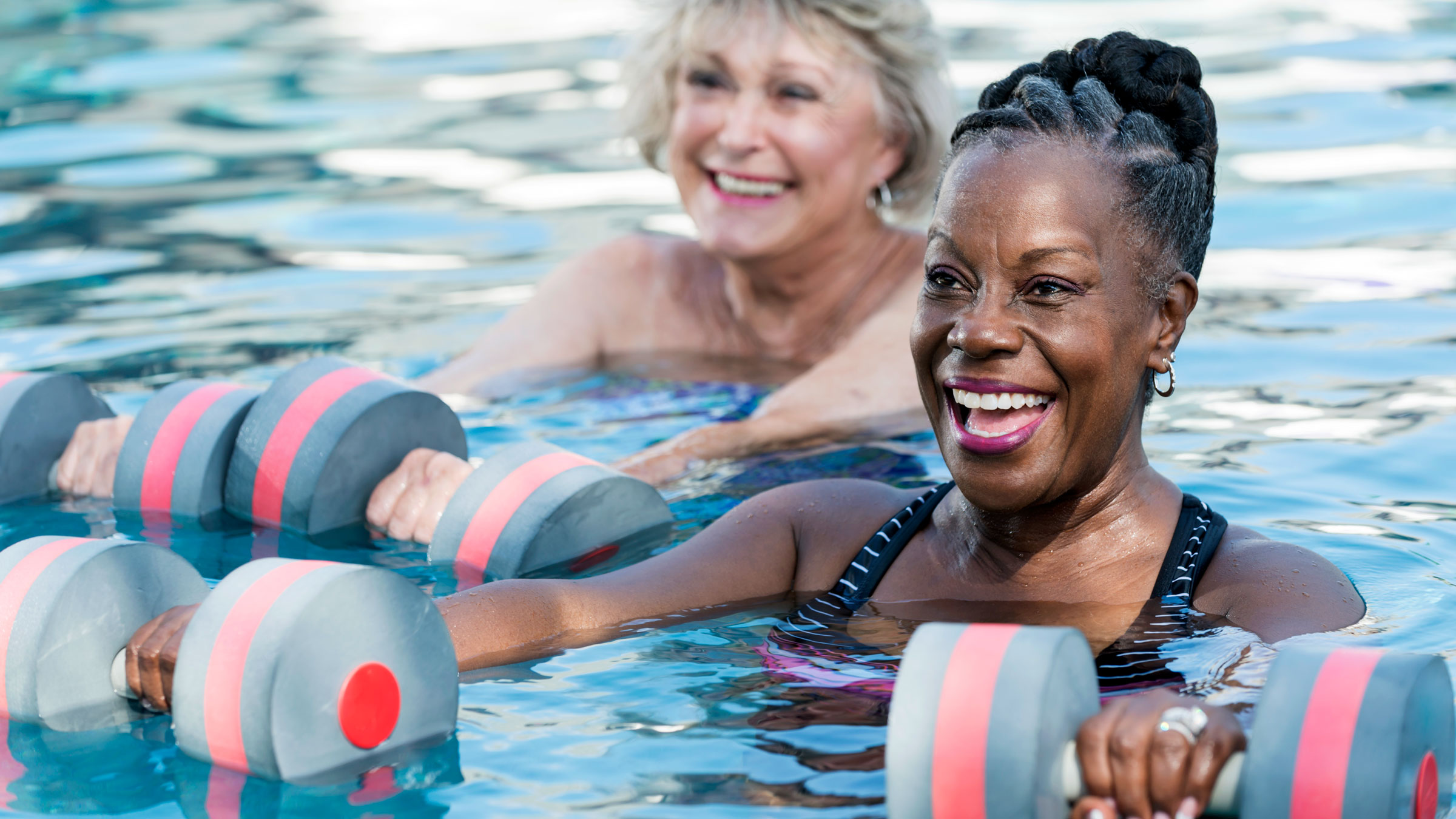Kelly Amerson López was surprised by what she learned when she started swimming. She was in her thirties and a fitness enthusiast who raced half marathons in Central Park.One day at the gym, she saw a group of individuals utilising the pool. They were jogging in place and rotating in chest-deep water, and the instructor sounded like a military sergeant rather than a water aerobics teacher.
"They looked like they were getting a great workout," she told me.
Ms. López started attending water training lessons and discovered that jogging in deep water helped her build stronger upper body muscles than running on land. She's now 68 years old and has always included pool activities in her training programme.
Why exercise in water?

The term "aquatic exercise" refers to any specific kind of physical activity that takes place in a body of water and does not include swimming laps. In most cases, it is performed in water that is chest-deep, which allows you to push off the bottom or jog in place while still reaping the benefits of getting full-body resistance.
Because of the hydrostatic pressure of water, which forces blood back to the heart, exercising in water does not cause your heart to beat as quickly as it does when you exercise on land. As a result, your heart rate will be slower. You may not have the impression that you are receiving as good of a workout as you would want, but there are reasons to think that you are: A number of studies have shown that the increases in fitness (both aerobic and anaerobic) that occur as a result of doing treadmill workouts on land and water activities are comparable.
Individuals who are unable to participate in high-impact exercises on land might benefit tremendously from engaging in aquatic fitness. People who have had their knees repaired are still able to run in place and execute jumping jacks while they are in the water.
How to get started
The only thing you need to begin an aquatic exercise program is a pool and a bathing suit (or a shortie wetsuit, if you prefer). Ms. Denomme said the water temperature should ideally be between 83 to 86 degrees Fahrenheit, because it’s warm enough that your body doesn’t have to adjust, yet cool enough to prevent overheating.
She suggested starting without equipment, so you can learn how to use the resistance of the water to optimize your workout. Moving slowly through the water, like when you’re jogging in place or doing leg exercises, is great for mobility and balance. Moving more quickly, like with jumping jacks, has strength and cardiovascular benefits, Ms. Denomme said.
Warm-Up
Before starting, warm up for about five minutes. Spend one minute jogging in place in each of the foot positions listed below to allow different muscles to be stretched and strengthened, Ms. Denomme said. Move directly from one position to the other, with no rest in between, at a moderate pace.
-
Feet slightly wider than your shoulders
-
Feet close together, side by side
-
Right foot slightly ahead of your left foot
-
Left foot slightly ahead of your right foot
-
Toes pointed outward diagonally, like a duck
The Workout
This full-body practice may be performed with or without webbed gloves, and it consists of high-intensity periods that are broken up by active recovery. Keep your grip on the edge of the pool if you experience any unsteadiness while doing any of the moves.
Once you have reached a point where you are comfortable with the quicker and more intensive exercises included in this programme, you should do them at around 80 percent of your capacity. Make an effort to complete the whole programme without taking any pauses, and make use of the slower exercises to regain your breath. You should either take rests between the exercises or slow them down if you find that it is too challenging.

